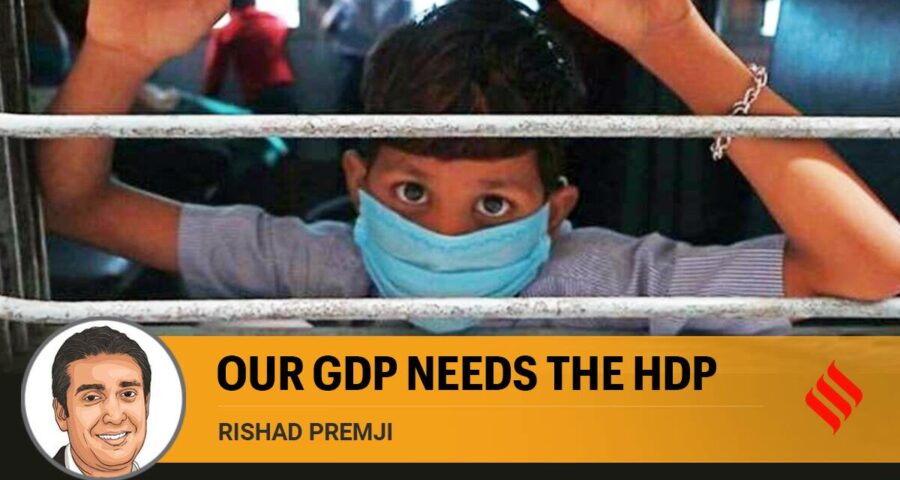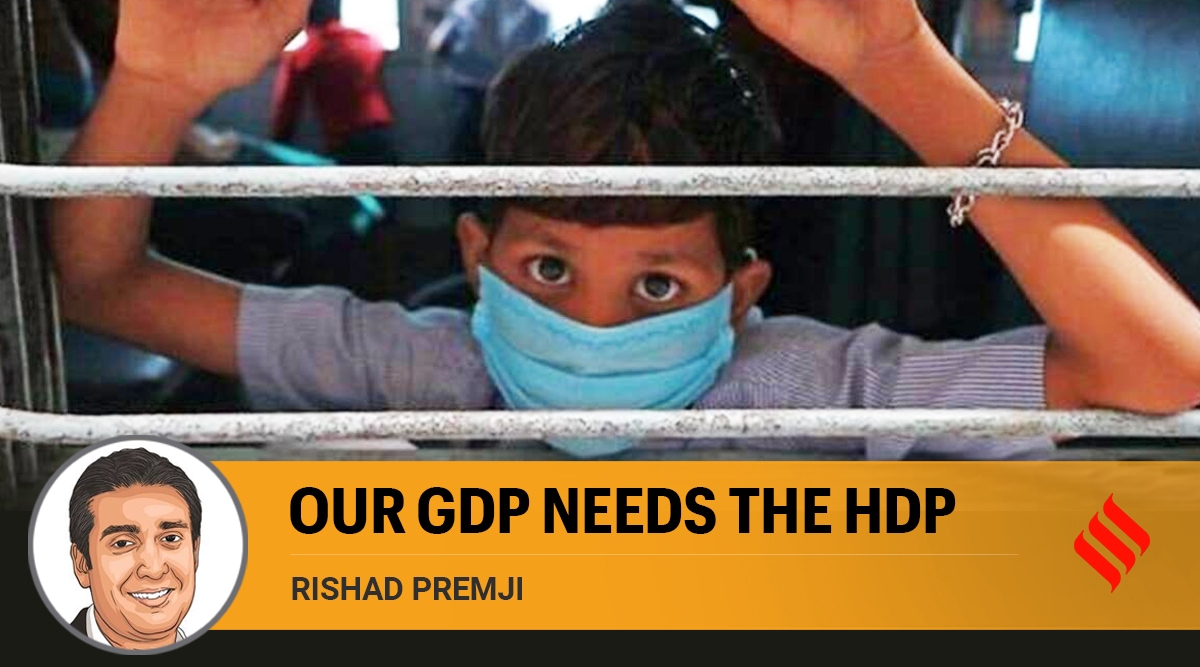Rishad Premji writes: GDP indicates economic growth, while Human Development Product can help us identify and remove inequities and injustices.
I am blessed and privileged. While I have the honour and responsibility of being the Chairman of Wipro, I also have the opportunity to be fairly engaged with the work of the Azim Premji Foundation. This has given me the chance to see very different views of the world — of the tremendous potential and success technology has brought to our lives and the tremendous deprivation and inequity that still exists all around us.
This reality is visible, but often not noticed. While we are all familiar with the economic hardship of many Indians, the figures tell us how deep this issue is. Even before the pandemic, the median household income in India was Rs 15,000 per month. That means a family of four at the median income level lived on just Rs 125 per day per person for all their expenditure on food, clothing, housing, healthcare, festivals and more. Half of India lives with less than that. It isn’t a surprise that one health emergency can crush an entire family economically even at the median income level — and this happens to fellow citizens in our country every day.
The bottom 25 per cent of households (about 300 million people in India) lived on an income of less than Rs 8,500 per month or Rs 70 per day per person. For the bottom 10 per cent these numbers are even more gut-wrenching. And these numbers do not account for the economic devastation that the pandemic has caused.
None of these numbers capture stark inequities and injustices across gender, caste, regions, and more. Can we even imagine what circumstances many of our fellow citizens live in?
There is no doubt that from the wonderful day when India became free in 1947 to today we have made enormous progress. However, we still have work to do to build the India that we promised to ourselves in our Constitution.
To make progress on these inequities, I propose we add an additional key measure to that of the GDP — the Human Development Product (HDP). I believe deeply that you achieve what you measure. However, at times you must dig deeper, to the next level of measures, to truly understand the real health of the situation you are assessing. It is critical to narrow down to these “vital few” measures without forgetting that as time and circumstances change, these “vital few” measures may also need to be revised. What is special about these measures is that they themselves align and reflect the progress on many other measures.
I propose that the HDP consist of the following five parameters: First, the female labour force participation rate. Depending on what definition you look at, currently this number is 11 per cent or 22 per cent. It is shockingly low. The empowerment of women through their economic independence is central to human development. Second, gender income parity: A comparison of both, the median and the 75th percentile, of wages of men and women. There is no point in more women participating in the labour force if we continue to give them insecure and lower-paying jobs than men. Third, stunting. Stunting amongst children is about 35 per cent. This number reflects many things directly, for instance, the state of our public health, the nutritional status of our people, and environmental conditions. Fourth, water quality and availability. This is more difficult to measure, but tracking a few important indicators can suggest the national trends. So, I suggest we measure the quality and flow of 10 key rivers at specified geographical points and periodicity, as well as measure groundwater levels and quality in some of the most stressed areas. All this could give us an aggregate water health index. Fifth, the quality of polity. For this, we can measure the percentage of members of all our legislatures — state legislatures and Parliament — against whom criminal cases are pending or have convictions.
The natural debate that follows is why only five measures and why these five. There is no perfect answer to this. I have tried to pick the “vital few” which I believe will measure the progress of the most fundamental things in our country and reflect human progress. Like former US President Barack Obama once said, “if you want to see what a country is like, go and see how it treats its women”. The two measures on women empowerment that I have chosen balance each other and reflect deep structural issues, both in the economy and in society. So, any progress on these two will happen only when there is broad-ranging progress across multiple factors such as education and an increase in employment opportunities.
Stunting is not only one of the cruellest things that society accepts but is also reflective of widespread conditions of public health, nutrition and public education.

I am deliberately calling it the Human Development “Product”, because these measures are a product of innumerable important factors — education, health, livelihoods, societal norms, political climate, environmental conditions, and more. Improvement in HDP will reflect and happen only with improvement on all these factors.
I am an amateur in these matters. Others could perhaps propose better parameters. What I am arguing for is a measure of true human progress, which if left behind will negate all the progress we make in our GDP and as an economic power of the future.
On this eve of the 75th anniversary of our Independence can we commit to ourselves that the HDP growth rate will be as much or higher than the GDP growth rate?
This column first appeared in the print edition on August 14, 2021 under the title ‘Our GDP needs the HDP’. The writer is Chairman, Wipro Ltd.
Source: Read Full Article


